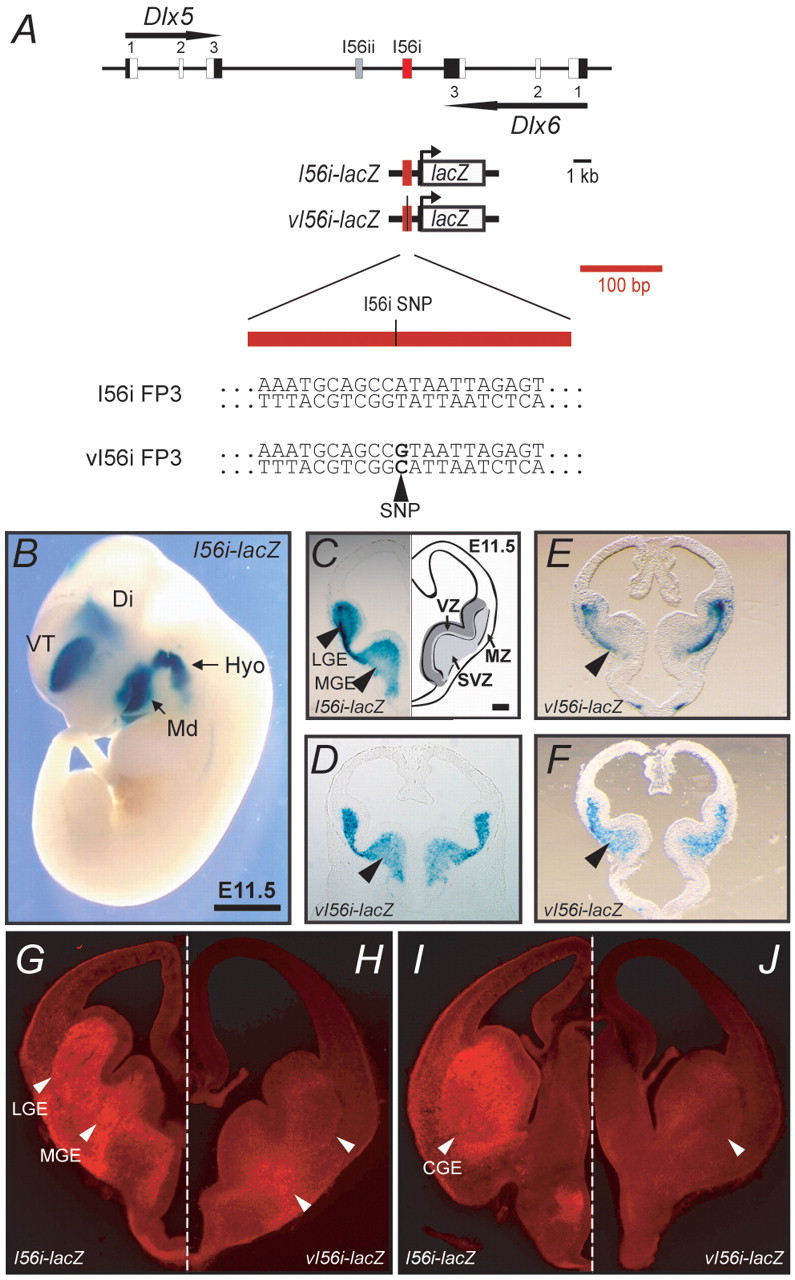Fig. 2.

The 182-SNP affects I56i enhancer activity in the developing forebrain. (A) Dlx5/Dlx6 bigene cluster. Exons are shown in black and white (coding), the enhancers I56i in red and I56ii in gray. The I56i enhancer is enlarged to show the position of the 182-SNP variant identified by Hamilton and collaborators (Hamilton et al., 2005). The sequence of the 182-SNP variant (vI56i) and wild-type I56i are shown beneath. The remainder of the mouse and human I56i sequences are virtually identical (Zerucha et al., 2000). (B) At E11.5, the mouse I56i enhancer drives lacZ reporter expression to the ventral telencephalon (VT), diencephalon (Di) and to the hyoid (Hyo) and mandibular (Md) arches. (C-J) Transverse sections through the telencephalon of I56i-lacZ (C,G,I) and vI56i-lacZ (D-F,H,J) mouse embryos at E11.5 (C-F) and E13.5 (G-J). (A-F) β-galactosidase assay staining. (G-J) Immunohistochemistry for β-galactosidase. (E,F) Sections from primary transgenic embryos. Black arrowheads (C-F) and white arrowheads (I,J) indicate reduced vI56i enhancer activity in the MGE at E11.5 and in the MGE, LGE and CGE at E13.5, respectively. The asymmetric staining observed in E,F could be attributed to tilted sectioning and is not the result of asymmetric expression of the lacZ transgene; it is similar to the results of transgenic experiments reported by Lettice and collaborators concerning a point mutation in the ZRS enhancer of the Shh gene (Lettice et al., 2008). Scale bars: 1 mm in B; 500 μm in C-J.
